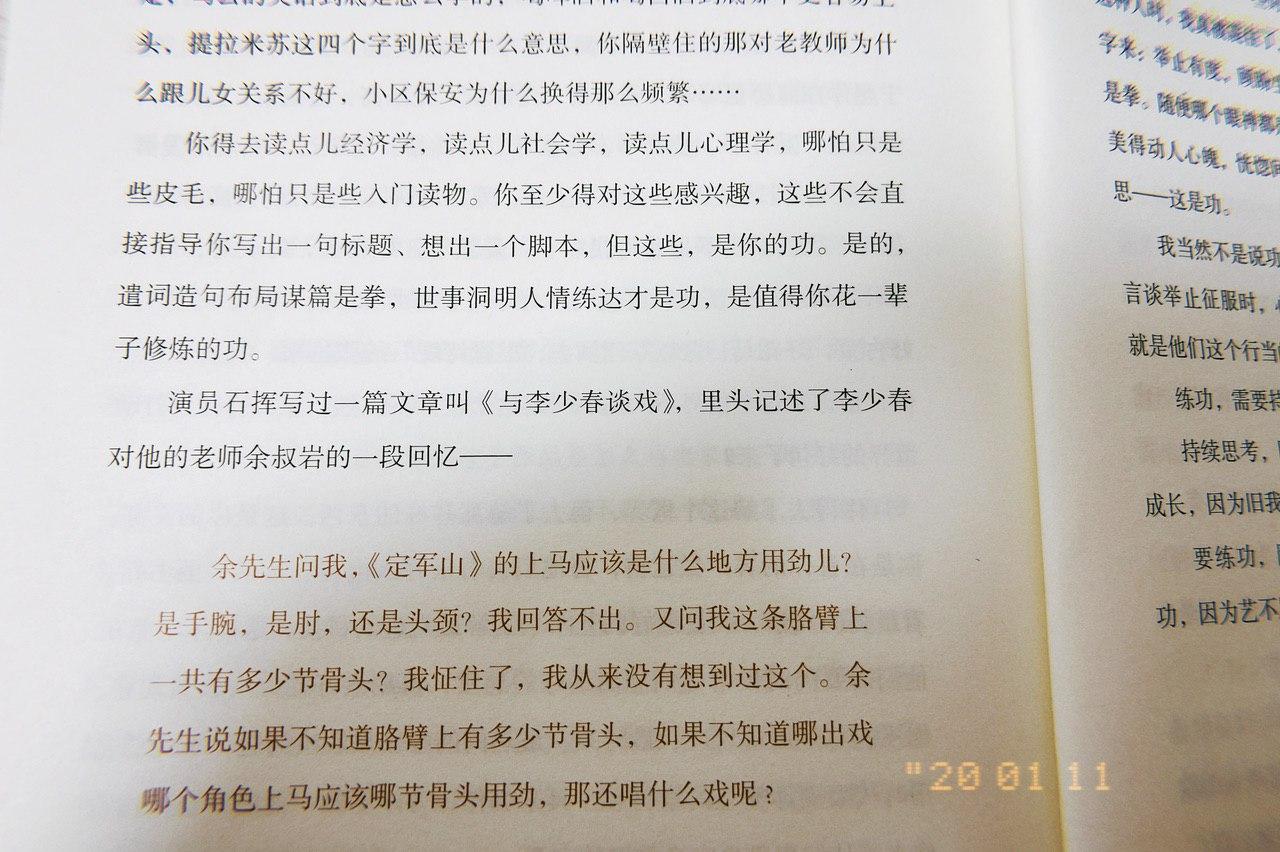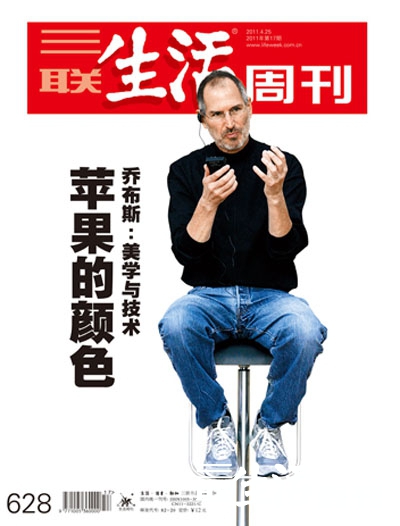定义,本质上就是创造。
Tag: 创意
Dkphhh's MurmurCreated@ Mon Mar 13 2023 22:12:00 GMT+0800 (China Standard Time)
Dkphhh's MurmurCreated@ Sat Mar 04 2023 22:35:00 GMT+0800 (China Standard Time)
大家都是搬砖,也要比谁手上的砖好看啊。
推荐一个 Mastodon 的 iOS 客户端
Mammoth 正在 TestFlight 测试中,UI 做得很漂亮,有一些颇具巧思的功能,说几个我喜欢的,排名不分先后:
- 震动反馈,力度拿捏得不错,用过就知道是什么感觉了。
- 底栏几个功能区可以相互替换。
- 可以将 hashtag 和 instances 添加为列表。
- 探索页面有热门展示,热门嘟文会针对用户语言进行调整。
- 支持 shortcut,但这个功能目前有 bug。

职业人的基本修养 | 文摘#23

2020 年读完的第一本书是《文案的基本修养》,作者东东枪,前奥美创意总监,现字节跳动营销创意中心负责人。他更为人熟知的身份应该是古早级网红、文化人和相声曲艺爱好者。如果你不认识他,可以关注他的微博,如果可以,最好关注他的饭否。
我刚刚注册微博时,东东枪是微博默认推荐关注的网红,标签是段子手,所以最初我刚认识他时,也只当他是段子手。后来上了大学,学了广告,在老师的介绍下,我才知道他是奥美的创意总监。难怪感觉他比其他段子手有文化一点。
现在我毕业了,虽然没有从事广告工作,但我依旧很好奇一个在奥美供职近 8 年、全程经历了大陆广告业由盛转衰的人会如何总结他的工作经验,如何看待这份工作,或者说“手艺”。
对于我来说,这也是一次补课。虽然我在教室学了 4 年,但看着我过去交给老师的作业和参加比赛的作品,我打心底里觉得那些东西并不是真正能出街的广告。因为那些文案、设计、还有 TVC,都是我“一拍脑袋”想出来的东西,没有规律可循。我不相信一个已经发展了上百年的行业、一个已经形成工业体系的产业,它的作业方式是这样的,这太不职业了。
看完这本书以后,我确实找到了我想要的答案。虽然这本书没有形成一个能画成树状图的体系,但也大体勾勒出了一个创意人员应有的工作流程,也扫清了一些我的疑惑。
心像
大部分的甲方对用户画像可能有一种误会。我原来读书的时候,包括工作这一段时间,见过不少甲方的市场策略 PPT 和创业公司的 BP。他们在描摹用户画像的时候都会用到这样一种句式:
年龄 18 到 26 岁,一线城市和新一线城市的大学生或白领,审美品位良好,消费欲望强烈,追求品质感和个性……
坦率地讲,这种话我在交给老师的策划案里也写过不少,当时我觉得这种概况并不准确,但是我也不知道怎么做更准确。
直到我看到东东枪总结出了“心像”这个概念。这个概念来自北京人民艺术剧院的焦菊隐导演,最早是用来指导演员表演的。
一个“活”的角色,他的表演是需要由内到外的,感情的核心冲突定义了这个角色的一言一行。一个优秀的演员需要先吃透这个角色的心理活动,再外化成表演。
对于做广告的人来说也是一样,要体会消费者的心理活动。
譬如你要帮一个艺术展卖门票,我们完全可以把上面那段并不准确的用户画像复制到 Marketing 的方案里。但如果你按照“18 到 26 岁的大学生或白领”这个范围限定你的消费者,你可能就错过了一个爱好艺术的 38 岁货车司机。
谁说货车司机不能爱好艺术,万一人家是个闷骚的大龄文青,平时运货听的都是鲍勃迪伦呢?
东东枪举了一个特别好的例子,一个旅游产品怎么定义目标人群:
我们的目标消费者是那些有钱出国旅游,也想出国旅行,但因为没有出国旅行过,而有点害怕出国旅行的人。
核心体验
“核心体验”是一个很暧昧的概念。书里说核心体验是导致用户“认知改变”的根本原因。它可以是具象化的“利益”,也可以是抽象的感受。市场营销里讲的USP、我们日常用语里的“买点”都能构成这个“核心体验”。
原来上策划课的时候老师提过一个点叫“核心理念”,简单来说就是你策划的这个 Campaign 要告诉消费者什么,也可以拿来安插在这个概念上。
核心体验可以说具象化的“利益”,譬如小米手机早期主打的“性价比”就是一个消费者很关心的利益点。
核心体验也可以是抽象化的感受,例如星巴克。星巴克的咖啡品质对得起他的价格吗?咖啡爱好者肯定不这么认为。但星巴克成功地将自己塑造成了一个公共空间,嵌入到了城市生活中。这是一个被创造出来的感性需求。
如何提炼核心理念,书里说了三个思考维度:
用户需要什么?
竞品提供了什么?
我们能提供什么?
三种洞察
前面的两个概念比较靠近前期的策略环节,洞察就涉及到实际操作的层面了。
一条广告的受众可以分成三种人。观看者——看这条广告的人;参与者——转发、评论这条广告的人;消费者——看到会买的人。
这三种人是不一样的,但是可以相互转化。参与者会带来更多观看者,观看者或许能成为消费者。
所以东东枪也总结出了三种洞察:
社会群体洞察:想想社会上的人关注什么议题,找到一个切入点,会让更多的人愿意看你的广告。
参与群体洞察:如何让观众主动互动?可以设置槽点,可以挑拨情绪。这个东西还和传播媒介有关,“转发抽奖”就是一个最简单直接的参与群体洞察。
消费者洞察:参看上面的“核心体验”部分。
因为现在职业和广告关系不大,关于广告实践的更深刻的反思只能留给更专业的人了。对于刚刚进入职场的我来说,这本书最醍醐灌顶的反倒是最后几个小节,字里行间里关于职业精神的总结,还有一些做人做事的原则。
譬如说什么样的人适合做广告,东东枪说“好孩子”不适合,在大学学广告的也不适合。最适合的人是在社会底层摸爬滚打过的“坏孩子”,因为这样的人能洞悉人性人心,准确把握需求。
我觉得能把握人性需求的人,几乎能胜任所有“工作对象是人”的职业。真正能做到这一点非常难,但是我们可以努力做一个“讨人喜欢的人”。
还有他经常提到的“对客户真诚”、“对工作负责”之类的话,我在没上班之前觉得这是基本要求,后来发现要做到这些基本要求挺难的。
书里有一个关于医生治病的例子,我觉得很对。
普通医生看完病,给病人开药单,让他到药房拿药。
好医生看完病,开完药单会说,“药房有点远,您让孩子先去拿药,您在一楼等他就好。某某药需要冷藏,记得要把冰箱温度调好。看您好像不是本地人,是四川人吗?其实四川的某某医院也能治这个病,您下次再犯病别跑这么远了,直接去那家医院吧。”
最后分享两句对我有启发的话:
“遣词造句布局谋篇是拳,世事洞明人情练达才是功,是值得你花一辈子修炼的功。”
“今天也要为了早点下班而好好上班。”
我 2019 年毕业,现在工作半年。我就职的是一家小型行业媒体,全职员工 5 个人。我的直属上级就是老板,但老板每天全国各地到处飞,没有时间教导我。说得好听一点,我是在实践中学习,独立解决问题。但实际上我就是在不断碰壁,在一次次踩坑中积累经验,效率非常低下。
在这半年的时间里,基本每个周末我都在盘算辞职的事情。但是我觉得第一份工作不能干不满一年就走,所以我就坚持了下来。
收获还是有的,更多的是在心态和工作习惯上。在一家小公司上班,你能看见老板每天在干嘛。你能直观地感受到中国的小型民营企业主每天要操心多少事情,成年人的生活里真的没有容易两个字。想想自己每天加点班也不算什么了。
但我也有一些困惑。我觉得这不是能做一辈子的事。但在中国,除了体制内,似乎也没有什么能干一辈子的工作。我认为我应该找一个能做一辈子的事业。
头图:自己拍的
Dkphhh's MurmurCreated@ Fri Nov 16 2018 18:03:00 GMT+0800 (China Standard Time)
森林一次又一次的起泡,
坐在公园的长椅上,
看着森林的泡泡烟消云散。
沐浴在被傍晚染成淡黄色的想法里,
把云朵的倒影献给这美丽的层次。
在一个超大的意识托盘里,
灯笼上的演讲者在讲着话,
“看啊!他和云一起飘过来了!”
其他的人永远不会想到,
他仍然是一个剩下的东西。
剩下的就是心灵飞行时所经历的事,
都被云朵带走了。
它们的影子印在黑暗时代的脸上,
公园突然安静了下来,
警卫清着嗓子,
灯柱在和戴着面纱有着条纹形状的云彩说着什么。
坐在公园长椅上的女棋手,
摆弄着箱子里的权势。
日落时分,
太阳即将压进水里,
警卫把云彩释放出来时,
农夫格兰走了进来。
——露露写于梦中。
苹果的颜色_三联生活周刊
> > 正文
2011-04-20 10:46 作者:鲁伊来源:三联生活周刊 2011 年第 17 期
我们为什么会对苹果的颜色产生兴趣?是什么成就了今日的苹果?库萨克给出的答案是两个英文单词:“Jobs”(乔布斯)和“Cool”(酷)。这个答案引向苹果的另一重颜色:白色。

苹果是什么颜色的?
这只苹果,当然不是被亚当夏娃偷吃了的那只伊甸园中的禁果,也不是砸在牛顿头上帮助他发现万有引力的莫须有之果。一个名词的所指常常被时代打上深刻的烙印,甚至改变它原有的内涵。在过去的 10 年之中,当我们提到苹果的时候,绝大多数时候指的是“那个苹果”——为史蒂夫·乔布斯所创造的苹果公司及其产品。
我们为什么会对苹果的颜色产生兴趣?
回答这个问题之前,不妨先来听一个“紫牛”的故事。这个故事的讲述者,是赛斯·高汀(SethGodin),一个硅谷的实业家和市场营销专家。
故事是这样的:几年前,高汀与家人驱车穿越法国。旅程开始之时,他们都陶醉于路边以前只有在童话书中才会看到的绵延数十公里的奶牛,但 20 分钟之后,车上的人就开始对这些动物熟视无睹了,甚至,更糟糕的,他们发现,那些曾经如此美丽的奶牛已经变得令人生厌了。
“它们也许是世界上最漂亮、最吸引人的奶牛,它们也许有着超越同类的温驯的性情,以及与众不同的美丽毛皮,在阳光下的牧场上,每一头牛看起来都是如此的美丽动人。但那又如何?所有的优点都无法改变它们的长相一成不变的无趣事实。”就在这时,塞斯想到——要是此时路边出现了一头紫色的奶牛,那会怎样?
这一刻的灵光一现,催生了 21 世纪头 10 年美国出版业最畅销的一本市场营销著作——《紫牛:从默默无闻到与众不同》(Purplecow:TransformYourBusinessbyBeingRemarkable)。在这本书中,高汀断言,我们已经进入了一个消费者几乎已经拥有了所必需的一切、很难有东西能激起其消费欲望的后消费时代,传统的面向大众的产品定位和老的营销法则即将衰亡,在这个需求饱和的时代,一种产品想要卖得出去——遑论获取成功——必须是值得注意的、例外的、全新的、有趣的,换言之,成为一群平庸无奇的黑白花奶牛中的那头出类拔萃的紫牛。
什么是黑白花奶牛式的产品?什么又是紫牛式的产品?高汀给出了一个简单的特征定义:大众化无特色 VS 独一无二;向所有人发动广告攻势 VS 集中在产品成长期发动广告攻势;害怕失败 VS 害怕平淡无奇;很长的生命周期 VS 很短的生命周期;很少发生变化 VS 剧烈的变化。他特地指出,从某种意义上讲,紫牛并不比其他的牛更好,它不会生产出更多的牛奶,也不会需要更少的饲料,也没有先进到拥有多种高科技功能。它的紫色不是创新,而是一个新事物,即便它的功能仍然同市场上所有的竞争对手一样,单凭紫色这一点,就足以令它超凡脱俗。
高汀的这本书出版于 2003 年,那时,距离苹果推出 iPod 只有不到 3 年时间,令 iPod 得以执数字音乐界牛耳的 iTunesStore 服务甚至并未问世,由 iPod、iPhone 和 iPad 所掀起的苹果热潮还远远未能像今天这般,横扫在最近几年中迅速变得格外扁平的世界。正因如此,在高汀的“紫牛”群中,苹果公司只占到不算大的一个位置。
然而,8 年之后的 3 月 2 日,当前一天还在互联网上死讯纷传的史蒂夫·乔布斯出乎所有人的预料,“如一只螳螂般瘦削……也像一只螳螂般昂首阔步”地出现在旧金山芳草地艺术中心 iPad2 的发布会现场时,无需抛出那些惊人的数字——推出时间还不到一年的 iBook 网上书店,已经有超过 1 亿本书被下载;世界最大的图书出版商兰登书屋于此日正式宣布进驻,至此,全球六大图书出版商皆已成为苹果商店的合作伙伴;在全世界范围内,与信用卡绑定的苹果账户已经超过两亿个;通过在 AppStore 上销售自己开发的应用程序,全球的程序开发者们总计获得了 20 亿美元的收入;iPhone 手机的销售量达到了 1 亿台;2010 年,在推出后的 9 个月中,苹果卖出了 1500 万台 iPad,销售额高达 95 亿美元,占有了 90% 以上的平板电脑市场——只要看一眼每个人越来越苹果化的生活,便已知道,从年轻时代起便以“现实扭曲力场”著称的乔布斯,已经成功地在短短 10 年间真的扭转了现实,将一家被华尔街诊断为“病入膏肓”、市场份额滑落到历史最低点的公司,变成这个时代最闪亮耀目的一头“紫牛”。
紫牛何来?
关于苹果的颜色,多年以前,乔布斯曾经给出过一个官方定义。1983 年 10 月,麦金托什电脑揭晓软件供应商的发布会上,犹是一副年少轻狂模样的乔布斯说,“苹果是红色的,IBM 是蓝色的”。将这一红色定义演绎得最为淋漓尽致的,是那个著名的麦金托什电脑广告——一如奥威尔在《一九八四》中所预言的那个阴沉、冷寂、单调划一的未来世界,身着白色上衣、红色运动短裤的女子像一团生命之火一样跑来,挥动大锤砸碎统治人们思想的铁幕。
如果说蓝色象征的是秩序和理性,红色则是叛逆的颜色。在成长过程中深受 1968 思潮影响的乔布斯,几乎从苹果公司创立之始,就把自己放在了以 IBM 为代表的现代社会的合理化的牢笼的对面。
那是上世纪 70 年代末的美国,一个职员的国度,来自四面八方的人们像潮水一样涌进大城市,涌进高楼大厦里笼子一般的办公间。不过几年时间,大多数的人就都买得起汽车、电话和电视,中产阶级的郊区住宅也不再遥不可及。失业成了不可能的事,每个人面前摆着一条通往更快更好更高的康庄大道,仿佛只要你按照理性的社会法则修理自己,便一定可以拥抱成功与幸福。
《法国 1968:终结的开始》一书中的一段文字或许是对这种合理化生活的最佳写照:
“社会是一朵塑胶花。旧的模子,新的颜色。塑胶花永不凋谢,只是遇热融化。今儿个该发薪水了吧,我们每个月定期受贿。把我们的梦想欲望定型上模,所以呢,我,而且只是我,要往上爬。我牢牢地抓紧我的白领工作——深怕别人来抢,我默默地忍受我的蓝领劳动——毫无尊严可言。下班钟一敲,我就遁回我的蚕茧,我的欢快,我的家庭告诉我,我是对的。”
按照马克思·韦伯的观点,在这个合理化的社会中,一家企业若想获得成功,必须满足人们追逐合理化的需求,提供合理化的产品,诸如效率、可计算性、可预测性和可控制性。显然,这绝非乔布斯的苹果。
为了苛求细节上的完美而一再拖延发布时间,公司内部模糊的层级和人事关系,封闭的产品体系,嬉皮士式的企业文化……当我们回头细看苹果公司的编年史,苹果电脑时代的种种出格之处,几乎是一本 MBA 反面案例教材,而这些不按牌理出牌的叛逆属性,至今仍深烙在苹果产品的血液里。
然而,是它们令苹果成为紫牛吗?换言之,按照今天被许多苹果“粉丝”所津津乐道的这些苹果法则去打造一家新的公司,是否也能收获类似的辉煌?
事实上,在《苹果模式》(TheAppleWay)一书中,作者杰弗里·库萨克(JeffreyCruikshank)开宗明义便指出,苹果的商业模式是一种不可模仿的模式,刻意重走苹果之路的人,99% 将遭到乔布斯在 1985 年所遭受的命运——被象征着商业理性原则的董事会驱逐出局,而能够像乔布斯那样东山再起的,几乎万中无一。看一眼高汀本人的经历,便是极好的例证。尽管他似乎深谙创造紫牛的种种秘笈,但迄今为止,他的最高成就,不过是于 1998 年将自己创建的互联网市场营销软件 Yoyodyne 以 3000 万美元的价格卖给了雅虎。
是什么成就了今日的苹果?库萨克给出的答案是两个英文单词:“Jobs”(乔布斯)和“Cool”(酷)。这个答案引向苹果的另一重颜色:白色。
几乎每一款苹果产品,都会在包装盒里附送两张白色的苹果贴纸。这白色的苹果,是苹果产品追求设计、追求唯美的象征符号,更是自青年时代便热衷于禅修的乔布斯“无或一切可能”东方哲学的具体体现。
从苹果二代开始,即或人们对苹果产品有着这样或那样的诟病,但它的轻灵、简约和优雅几乎是无可置疑的。从形而上的角度观察,这形成了与以黑铁为沉重主色调的庞然大物的现代机器的巨大反差。而它所张扬的享乐主义的小众趣味,亦是对贯穿 20 世纪高效率主题的一种反讽。
然而,尽管这一白色主题一直存在于苹果的基因之中,但却直到最近 10 年,它才得到大众市场的肯定,进而成为一种席卷全球的有别于可口可乐、麦当劳和 IBM 电脑的美国文化新符号。
一种解释,可以借用英国思想家汤姆·奈仁(TomNairn)的叙述:像乔布斯这样的“伟人”,他们支配现世的权力来自某种浓稠的文化想象,一种浪漫主义的残迹,一种夸大的非理性个人主义。在一个因为审美疲劳而渴求变革的年代,这样的另类反而要比新资本主义下处处可见的庸才俗货,站在一个更有力的杠杆位置,去操纵社会的喜好。
另一种解释,听上去没有那么曼妙,但也许更接近事实:苹果的非典型性成功,并不一定代表某种新的方向,它只是人们对 20 世纪效率与理性主题的厌倦在 21 世纪的一场爆发。同青年时代的乔布斯一样,我们每个人的心中都曾经藏着一个改变世界的理想,但在绝大多数情况下,因为这样或那样的原因,我们或迟或早地选择了妥协,接受了被世界改变的命运。我们按这个社会的理性法则修剪自己的枝丫,因为这样才能让成功——或者是不失败——的可能性最大化。但是,在我们的心里,依然藏着一个乔布斯式的自我,追求完美,不随波逐流,但却创造了潮流。
在这种意义上,乔布斯,这个符号式的人物,成为苹果特质的一个背书。不可否认的是,随着苹果变得越来越大,它的颜色也在慢慢地发生着微妙的变化——事实上,它越是成功,就离人们的想象越远。将流水线的高效率发挥到极致的组装工厂,保证了 iPad 令竞争对手无可企及的低成本。每个人都要玩《愤怒的小鸟》和《植物大战僵尸》,否则便似乎被时代的潮流所抛弃。它越来越多地散发着商业社会的金属光泽,变成一只银色的苹果。生活在消费社会中的我们以为可以凭借苹果式的产品摆脱从一个理性系统转向另一个理性系统的惯性路线,但真相是,在这个全球现代化的时代,王小波的预言从未像今天这般真实:“白银时代的人蒙神恩宠,终身不会衰老,也不会为生计所困。他们没有痛苦,没有忧虑,一直到死,相貌和心灵都像儿童。死掉以后,他们的幽灵还会在尘世上游荡。”
但是,只要乔布斯在那里,因为他的强大到无可比拟的“现实扭曲力场”,我们仿佛就可以说服自己,这只苹果,是与众不同的,热爱这只苹果的我们,是与众不同的。
关于乔布斯,最新的消息是,他终于要出自传了。
西蒙舒斯特出版公司上周宣布,由曾任 CNN 首席执行官和《时代》周刊执行主编的瓦尔特·伊萨克森(WalterIsaacson)执笔撰写的《iSteve:TheBookofJobs》,将于 2012 年初问世。在此之前,尽管市面上流传着十余本关于乔布斯的传记,但它们都未能得到乔布斯的正式授权。甚至于其中一本的出版商还为此在 2005 年遭到苹果在线商店的杯葛。
这一次的情形显然不同。据西蒙舒斯特的发言人称,从 2009 年开始,乔布斯本人和他的家人、朋友、同事就向伊萨克森一一敞开了大门。这让人无法不联想起乔布斯曾经多次说过的一句话:“现在还不到回忆的时候……一个人死之前不应出版自传,以免活着后悔。”
那么,现在,是时候了吗?■

版权声明:凡注明“三联生活周刊”、“爱乐”或“原创”来源之作品(文字、图片、音频、视频),未经三联生活周刊或爱乐杂志授权,任何媒体和个人不得转载、链接、转贴或以其它方式使用;已经本刊、本网书面授权的,在使用时必须注明“来源:三联生活周刊”或“来源:爱乐”。违反上述声明的,本刊、本网将追究其相关法律责任。
A key part of creativity is picking up on what others overlook | Psyche Ideas

Have you ever wondered why creative individuals seem to spot things that others miss? Whether it’s an inventor who finds an innovative solution to a familiar problem or an artist who reinterprets a landscape in a fresh way, many creative people have a special ability to find significance even in the mundane. Research suggests this isn’t just a coincidence: differences in the way someone’s brain prioritises information might actually fuel creative thinking.
Let’s consider how your brain prioritises information in everyday contexts. Every time you open your eyes, you’re flooded with visual information – way more than your brain can handle at once. Yet you aren’t overwhelmed, thanks to sophisticated attention mechanisms that filter out unnecessary stuff. These mechanisms typically prioritise information based on how important, valuable, surprising or relevant it seems. For example, you might be admiring some ripe pomegranates in a tree (a valuable resource), but if a snake suddenly slithers down the bough, your attention will snap to the snake because its presence is far more urgent. Evolution has fine-tuned this process to ensure we react quickly and appropriately to the most critical information; this may be a valuable resource in one moment (eg, pomegranates) but a dangerous obstacle the next (eg, snakes). As a result, people tend to notice similar things in their environment. But there are some intriguing differences in what captures each person’s attention. That’s where our research comes in.
My work explores the ways in which creative individuals prioritise information differently to their less creative counterparts. In one of our studies, my research collaborators and I used a classic task to see how the brain responds to another type of high priority information: surprising information. Participants listened to mostly repetitive auditory tones with the occasional rare – or ‘oddball’ – tone, while their brain activity was recorded using an electroencephalogram. Typically, individuals’ brains respond to the rare stimulus with a well-defined spike in neural activity, known as the P300, which indicates surprise. But for creative individuals? We find this spike is less pronounced.
In other words, it seems that creative people don’t see unusual information as quite so unusual. This may offer a big advantage for creative thinking because it blurs the line between what’s typical and atypical, allowing unusual ideas to be considered – and ensuring that the most obvious parts of a problem do not take up all the attention.
**The idea that creativity and attention **are linked isn’t new. Research has long shown connections between creativity and different types of attention, including links to ADHD, broad or unfocused attention, and so-called ‘leaky’ attention – that is, a less efficient attentional filter, through which irrelevant information is able to ‘leak’ into focus. Our research is suggesting that these differences in attention may come down to variations in how our brains prioritise sensory data – a dopamine-driven process called ‘incentive salience attribution’.
Incentive salience attribution is the process by which raw sensory data is unconsciously assigned significance and deemed worthy of attention, making certain information stand out from the rest. This process is closely tied to attention but also plays a major role in motivating thoughts and actions in response to significant information. This motivational aspect seems to be key to understanding how salience processes support creative thinking.
Newton saw an apple fall from a tree – something most people might view as trivial. Yet, he saw the apple’s fall as significant
Several theories of attention – such as the idea that creatives have a ‘leaky filter’ – help explain why creative individuals notice new information, but not why they are motivated by it. Creative minds seem irresistibly attracted to novel or unconventional information. My colleague Jonathan Schooler and I propose that this attraction is driven by the motivational properties of salience. When unconventional information gets flagged, it acts like a magnet, compelling individuals to explore it. This exploration boosts the chances that novel information will become a part of the creative problem-solving process, sparking innovative ideas.
This framework offers a new way to understand both creative traits and creative states. By creative traits, I mean the consistent differences in creativity that we observe when we compare individuals. Research indicates that how a person processes what’s important – the brain’s salience system – varies systematically from person to person. For example, people with schizotypy or autism often show unique patterns of salience processing, meaning they are naturally drawn to unconventional details. For example, individuals with autism tend to pay less attention to faces and social cues, such as where someone is looking, but more attention to mechanical objects or objects related to their specific interests. Similarly, we suggest that variations in the salience system may predispose some individuals to notice and then consider the unconventional, fostering a natural tendency toward original, creative thinking.
Now, let’s delve into creative states – those spontaneous bursts of creativity that can happen at any moment. Even the most creative individuals aren’t always in a state of creativity, nor are they creative in every situation. But during moments of creative insight, less obvious aspects of a problem can suddenly stand out, leading to that thrilling ‘eureka’ moment when new connections are made. On the other hand, uncreative ideas often emerge when someone can’t see beyond the obvious, getting stuck on familiar patterns. This is where common barriers to creativity come into play, including functional fixedness – a cognitive bias that prevents people from seeing alternative uses for objects or alternative solutions to problems.
We suggest that the functioning of the salience system plays a crucial role in these different modes. When attention is captured by an aspect of a problem or situation that isn’t usually prominent or relevant, the salience system has flagged atypical information for further processing, paving the way to a creative insight. On the other hand, creative blocks, such as functional fixedness, may arise under ‘typical’ salience functioning, where the system flags only the most prominent, obvious features of the problem for consideration.
Think about Isaac Newton’s famous insight into gravity. According to the story, Newton saw an apple fall from a tree – something most people might view as trivial. Yet, in this instance, he saw the apple’s fall as significant, prompting him to contemplate it more deeply. Entertaining the potential importance of this seemingly irrelevant occurrence led to a breakthrough connection: that the same force causing the apple to fall also influences celestial bodies like the Moon.
In this example, the creative individual’s brain flags unusual or ‘irrelevant’ information as significant, prompting them to explore it further. This exploration allows them to consider remote ideas and associations that others overlook, increasing the likelihood of a creative insight. Notice how the information that gets flagged doesn’t necessarily have to be directly related to the problem at hand; its value lies in the potential connections it can inspire, leading to innovative and unexpected outcomes. A similar process likely unfolds in artistic contexts, such as when a painter, musician or filmmaker sees a seemingly irrelevant detail as meaningful. For instance, an artist may find themselves captivated by the shadow cast by an object, finding it more interesting than the object itself. This might inspire a series of works exploring the hidden beauty of shadows.
**Thinking of this atypical salience functioning **as a state suggests that it could be ‘switched on’, potentially leading to creative thinking. Although direct evidence is lacking, there are several examples that hint at this possibility.
One example comes from individuals with Parkinson’s disease (PD). In particular, some patients receiving dopaminergic therapy to treat their PD have been shown to exhibit the characteristic symptoms of atypical salience processing; they sometimes report experiencing the world as teeming with unusual significance, where even trivial or irrelevant information seems to carry hidden meaning. A separate line of research shows that treated PD patients can experience sudden artistic developments or a drive to create. An open question is whether the atypical salience processing in these patients motivates this artistic drive.
What might seem like irrelevant information could actually offer an adaptive advantage, leading to unexpected insights
Certain kinds of everyday experiences might also influence how the brain assigns salience. For instance, some types of visual art, such as abstract or surrealist works, disrupt a viewer’s usual way of seeing by creating paradoxes and visual conflicts that don’t occur in nature. We believe that the unconventional nature of abstract art encourages the brain to enter a different state, relaxing its default perceptual predictions to accommodate the unusual sensory input. Supporting this idea, our lab has found that viewing art leads to some of the outcomes we theorise are associated with atypical incentive processing – including creativity. Now, we intend to examine whether atypical salience processing is responsible for driving the effect of art on these outcomes.
Another example where creativity and atypical salience processing intersect is in the context of cannabis use. Many users claim that cannabis sparks their creativity, helping them think outside the box and come up with original ideas. This perception might be linked to cannabis’s ability to induce atypical salience processing, which has been shown to drive some of the downstream effects associated with its consumption. However, the connection between creativity and cannabis is challenging to observe in laboratory settings. Most scientific research examining creativity and cannabis has focused on very specific types of creative thinking – such as the kind captured by lab-based tasks in which participants must generate as many ideas as possible in a limited time. These tasks rely heavily on cognitive control, which is the ability to focus and filter out irrelevant information. This style of thinking may actually conflict with the more free-flowing, open-minded attention style associated with atypical salience processing. Thus, existing research may be obscuring the broader impacts of cannabis on creative thinking.
This brings us to a crucial point: the concept of creativity is broad and multifaceted. Under the umbrella of ‘creativity’, researchers have identified two distinct attention styles. One of these, described previously, is leaky attention, which has been linked to real-life creative achievements. The other type of attention is characterised by highly controlled, ‘watertight’ focus. People with this attentional style are great at blocking out distractions and can shift their attention based on what’s needed for the task at hand. And this kind of attention is often a strong predictor of success in lab-based creativity tasks, especially those that are time-sensitive and require generating lots of ideas quickly.
Our atypical salience framework aligns best with the leaky attentional style and is therefore most likely to explain creative performance in artistic domains and predict real-life creative accomplishments. By distinguishing between these types of attention, we can better understand the diverse ways creativity manifests, and tailor our approaches to studying and fostering creativity across different contexts.
Taking a step back, our research proposes a new outlook on what is traditionally seen as ‘healthy’ neural functioning. While it’s often helpful, of course, to focus on the most clearly relevant information, this can sometimes constrain creative potential. In contrast, what might seem like irrelevant information could actually offer an adaptive advantage, leading to unexpected insights. From this perspective, the uniqueness of creative individuals lies in their ability to perceive and prioritise information in distinctive ways, embracing the unconventional and unexpected.